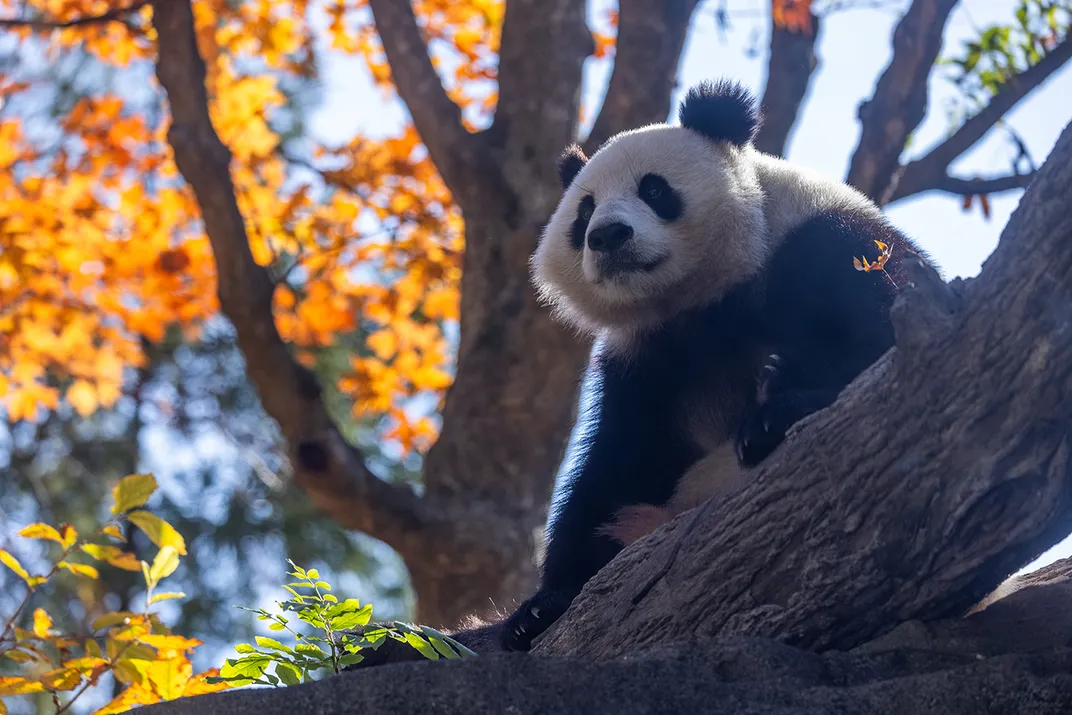NATIONAL ZOO AND CONSERVATION BIOLOGY INSTITUTE
Read Some of the National Zoo’s Most Amazing Animal Stories of 2024
Enjoy a look back at some incredible and heartwarming stories about the Smithsonian National Zoo’s animals and the people who care for them.
/https://tf-cmsv2-smithsonianmag-media.s3.amazonaws.com/filer_public/76/43/76437619-9516-4ea4-9907-7a1480eaf661/20240417-817a9651-07rp-pygmy-slow-loris-teaser.jpg)
No two days at the Smithsonian’s National Zoo and Conservation Biology Institute are ever the same.
This year was filled with incredible and heartwarming stories about the animals and the people who care for them. Enjoy a look back at some of the amazing things that happened this year.
1. Two Pygmy Slow Lorises Are Born at Smithsonian’s National Zoo
It’s not every day that Zoo visitors get to see a tiny, venomous ball of fur. It’s even rarer to see two of them.
A pair of pygmy slow lorises—the world’s only primate that can produce venom—were born this year to mother Naga and father Pabu at the Zoo’s Small Mammal House. Their births increase the chances of survival for this endangered species, whose numbers are in decline due to wildlife trafficking and habitat loss.
2. Inside a Rare and Life-Preserving Cheetah Surgery

A cheetah’s spine isn’t supposed to be C-shaped. After keepers detected a bulge on nine-month-old cub Freya’s spine during a routine exam, Dr. Kristina Delaski realized her team only had a few months to act.
Discover how a diverse group of veterinary specialists harnessed 3D modeling technology to give Freya a second lease on life at the Smithsonian Conservation Biology Institute earlier this year.
3. At the Bird House, A Baby Boom

Did you know the Bird House is the only place in the world to successfully hatch the common yellowthroat?
It’s true, but that’s not the full story. Including a pair of these cute little warblers, 27 chicks from 9 different species hatched at the Zoo this year. The entire population of North American birds has dropped nearly 30% since 1970, which is why Smithsonian animal keepers and scientists are rallying to identify breeding patterns among songbirds and waterfowl before it’s too late to act.
4. How Staff Rallied for an Abandoned Baby Monkey

Soon after birth, Edgar’s mother rejected him. It happens in nature and at zoos; sadly, sometimes a mother doesn’t display the maternal instincts necessary to care for her young.
Without the care and attention of his mother, Curator of Primates Becky Malinsky knew tiny Edgar would need help to stand a chance at survival. Read the heartwarming story of how dozens of staff members stepped up for Edgar, who is now living with the rest of the Allen's swamp monkey troop at the Zoo’s Think Tank exhibit.
5. Body by Bugs: Feeding the Zoo’s Insect-Eating Animals

They’re nutritious, affordable, and always in demand. Take a look behind the scenes as commissary staffers prepare and deliver thousands of crunchy crawlers to the insect eaters at the Smithsonian’s National Zoo.
6. How the Zoo Cares for Animals With Impairments
Every animal at the Zoo receives special care. But some need a little more support to keep them healthy and active.
Spend some time with Small Mammal House and American Trail keepers as they care for rescued animals like Basil the opossum, Acadia the eagle and Jo-Jo the seal.
7. Two Giant Pandas Arrive at the Smithsonian’s National Zoo

The Smithsonian’s National Zoo is once again home to giant pandas. After issuing a heartfelt farewell to Tian Tian, Mei Xiang and Qiao Qi Ji last fall, keepers welcomed a new pair of pandas to the nation’s capital from China Oct. 15.
The 3-year-old pandas, Bao Li and Qing Bao, are currently acclimating to their habitat and will make their public debut Jan. 24, 2025. The Giant Panda Cam, which has given millions of viewers a window into the lives of the Zoo’s pandas, will go back online the same day.
If these stories left you excited to visit and support the amazing animals at the Smithsonian’s National Zoo in the upcoming year, consider becoming a Zoo member!

